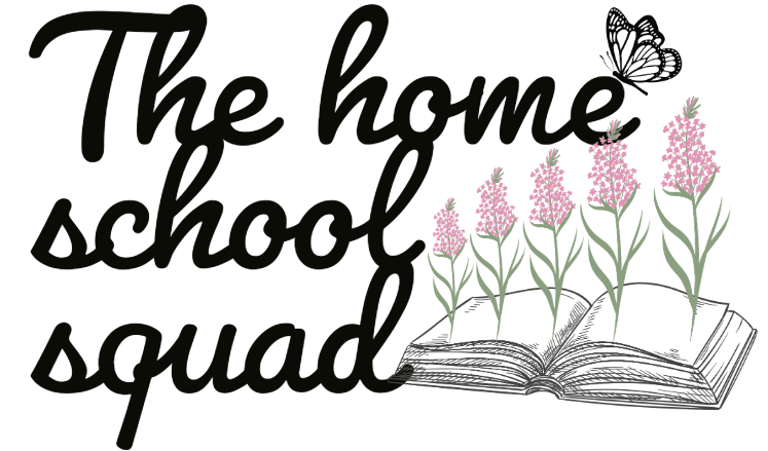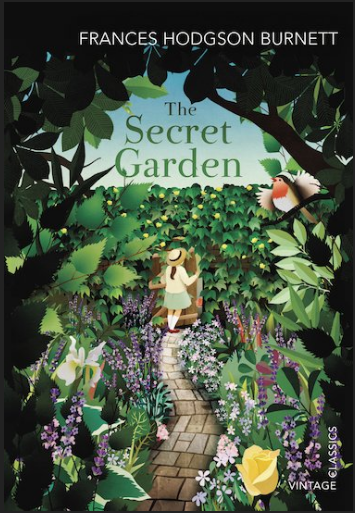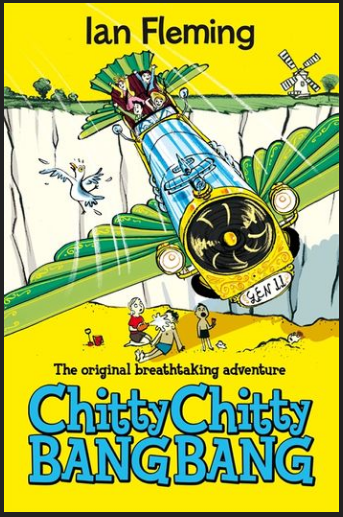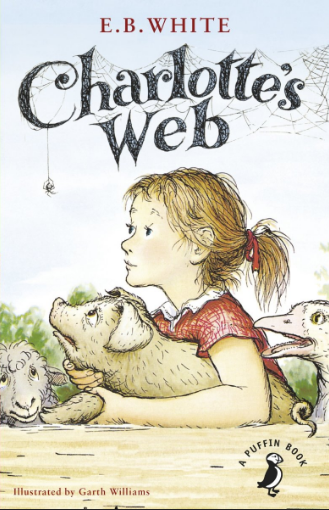Read aloud and Book Club Blog
When it comes to read-aloud time, the sky is the limit—there's no right way to do it! Families can start with the classics or dive into the latest great books fresh off the press. You can choose stories based on your child's interests or explore something entirely new. Children can listen to a parent's voice, an audiobook, or even participate by reading a page or a chapter themselves—mixing all of these options can make it even more engaging.
Kids can enjoy listening to the story while working on a puzzle, playing with playdough, or snuggling up with a blanket on the sofa. Read-aloud sessions can take place by the fire on a cosy night, outside in the garden soaking up the sun, or at the famous dining room table, also known as "school."
The benefits of reading aloud are countless: it helps with grammar and language development, introduces sophisticated language patterns, expands vocabulary, and fosters family discussions during mealtimes and car trips, to name just a few. It creates togetherness and lasting memories.
The added layers to the storyline are wonderful, and I’ll share examples of how we engage with different books in this blog.
Our read-aloud adventure began a few years ago, and we have enjoyed many wonderful stories since then. Read-aloud time has become a cherished part of our weekly activities. A dear friend of mine, who homeschools her four children, had the brilliant idea to start a homeschool book club, which has provided us with even more fantastic book recommendations each month.
Some of the titles featured on this blog are those we enjoy during our read-aloud time at home, while others are the ones we discuss in our book club meetings. The goal isn’t to provide exhaustive reviews, but rather to offer a brief overview of each storyline to avoid spoilers. My main aim is to share the books we’ve tackled so far (and we’ve gone through quite a few, so bear with me!), along with my personal reviews and insights on how we’ve woven each one into our learning adventures!


Mr. Popper's Penguins is a delightful and whimsical story that blends humour, family, and unexpected adventure in a way that’s perfect for readers of all ages. The story follows Mr. Popper, a poor house painter from a small town in Stillwater in the 1930s. He lives with his wife, Mrs. Popper, and their two children. Mr. Popper’s work is seasonal, so the family must budget for the times when he isn't working. Mr. Popper has a peculiar fascination with the South Pole and penguins, their lives take an unexpected turn when a penguin is delivered to their home, setting off a series of events that will change their lives forever.
Personally, what stands out most to me in this book is how the Popper family comes together and how they cooperate with each other. Their teamwork, creativity, and determination make the book not only heart-warming but also a great example of the strength of family. Each family member helps in their own way, demonstrating the power of supporting one another through difficult times.
As a homeschool family, we're always looking for ways to expand our learning, and Mr. Popper's Penguins offers a wonderful opportunity to do just that. Beyond its engaging story, the book introduces famous historical figures like Captain Cook and Admiral Drake, making it a great gateway for older children to explore the lives of these explorers in greater depth. After we finished the book, my oldest daughter even gave a family presentation about Captain Cook’s life, turning the reading into a meaningful history lesson.
Moreover, the book also opens the door to subjects like Geography and Biology. Through the penguins' adventures, readers can learn about the South and North Poles, their climates, and how penguins thrive in these extreme environments. It's a great way for young readers to explore the geography of the polar regions while learning fascinating facts about penguin life, including the different species of penguins and their behaviours. As a family, we loved visiting our local library to find books about penguins and the South Pole, and we ended up learning a lot about this fascinating region.
Additionally, Mr. Popper's Penguins offers a fun opportunity for exploring literary techniques such as alliteration. The humorous segment where more penguins join the family and form Mr. Popper’s Performing Penguins provides a great example of playful language that’s easy to relate to grammar lessons. We read this book a few years ago, but the older children and I can still remember what alliteration is because we associate it with the book. It’s a wonderful, holistic way of learning that connects concepts to real-life experiences.
Overall, Mr. Popper’s Penguins is much more than a simple children’s story. It’s a captivating and educational book that engages readers on many levels, from history and geography to biology and language. Richard and Florence Atwaters have crafted a timeless classic that not only entertains but also enriches young minds with important lessons and a sense of wonder about the world.
It has become a tradition in our family to watch the movie related to the book once we finish reading it. However, when it comes to Mr. Popper’s Penguins, I must say, what a disappointment! I’m so glad I watched it before showing it to my squad. In my humble opinion, the movie completely misses the most important message of the book—the unity of family. In the book, you see a close-knit family with helpful and respectful children, but in the movie, the parents are separated, the daughter is rebellious, and the family unit is essentially nonexistent. It’s such a shame to waste such a great storyline. I have nothing against separated parents—my own parents were separated—but my biggest problem with the movie is how they completely changed the storyline.
In conclusion, the book is a heartwarming tale of family togetherness and great adventures, but the movie fails to capture its true spirit.
Please note: This post contains affiliate links. If you make a purchase through these links, I may earn a commission at no additional cost to you. As a amazon Associate I earn from qualifying purchases.
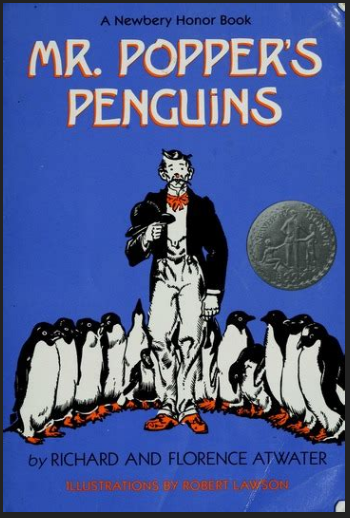

Mr Popper's Penquins
by Richard and Florence Atwater
____________________
If you're interested in this book, you can find it here.
I hope you enjoy it as much as I did!
#comissionsearned
If you’ve heard of Ian Fleming, you probably know him as the mastermind behind the 007 James Bond series. However, he also gifted us a charming book when he decided to write for his son, Caspar: Chitty Chitty Bang Bang! This delightful tale features the Pott family, a loving, united, and humble family.
The story begins with the father, an inventor, who creates a sweet that makes a whistling song as you eat it. He sells this tasty treat to a candy shop, and with the money he earns, he buys an old, rundown car that he fixes up himself. But this isn’t just any car—it turns out to be extraordinary, with all sorts of hidden features that come alive during the family’s adventures.
Things get really interesting when the Pott family ends up in France (I won’t spoil the details, so you’ll have to read it to find out how!). They stumble upon a cave filled with all kinds of doughy things, like guns and explosives, that belong to a gang. The main villain, Joe the Monster, captures the kids, but don’t worry—Jeremy and Jemima are clever little ones! Even when they’re in a tight spot, they come up with smart plans to escape and reunite with their parents.
One of the best parts of reading this book was how engaged my girls were during our read-aloud sessions. They were completely invested in Jeremy and Jemima’s clever thinking. In the end, the kids, along with their magical car, Chitty Chitty Bang Bang, save the day!
There’s so much to say about Chitty Chitty Bang Bang, but I want to highlight how we used a holistic approach to enhance our children’s learning experience during our read-aloud. This book provided a great opportunity to explore the cultures, food ,languages, capitals, flags, and even the English Channel of England and France. All this information can be tailored to suit the children’s ages and interests. I absolutely loved how the book ending, opened the floodgates of imagination for new adventures, making it perfect for writing time ideas.
Onomatopoeia is a fun linguistic term to associate with the book since the car’s name reflects the sound it makes. We also looked into the history of cars and how they have changed over the years, covering the basics of how cars work. I remember one time while reading, my husband passed by the kitchen table (aka: school) and shared a story he read about World War II, mentioning how Ian Fleming and Churchill were friends. Fleming once suggested putting a fake note in a soldier's pocket with misleading information, leading the enemy in the wrong direction and saving lives! That’s homeschooling for you—totally unpredictable and perfectly imperfect.
Of course, these are just a few ideas we incorporated while reading Chitty Chitty Bang Bang, but many other topics can be explored or skipped altogether. Overall, Ian Fleming did a fantastic job with this book. While the villains are quite bad, age and maturity should be taken into consideration, making it a good read for young audiences.
Now, about the movie! I’m not sure where to start. The first thing my girls said when the movie ended was, “What about Joe the Monster?” Perhaps if we hadn’t read the book first, we wouldn’t have felt a bit deflated. We did love the part where the children sing “Truly Scrumptious”—what a treat! The catchy Chitty Chitty Bang Bang song was delightful, as were the songs in the castle with the adults.
However, I didn’t like that, once again, the mother was taken out of the picture. The children in the book were smart and inspiring, while the children in the movie were sweet and kind; they came across as quite innocent and helpless, which was one of my biggest disappointments. They could have been wonderful role models of courage, problem-solving, cleverness, and kindness. As for the villain in the movie, I found the portrayal perplexing. He seemed a bit narcissistic and psychopathic to me, always needing to be the center of attention to the point where the children were side-lined. I’m not sure what to make of the numerous times he appeared to be trying to “get rid” of his wife, the queen.
In conclusion, contrary to the book, the movie was a bit disappointing. Even my younger child noticed the discrepancies between the two. However, it provided a great opportunity to exercise critical thinking, so not all was lost. The children did enjoy the movie, but not as much as the book.
Please note: This post contains affiliate links. If you make a purchase through these links, I may earn a commission at no additional cost to you. As a amazon Associate I earn from qualifying purchases.
If you're interested in this book, you can find it here.
I hope you enjoy it as much as I did!
____________________
Chitti Chitty Bang Bang
by Ian Fleming
#comissionsearned
The Secret Garden
by Frances Hodgson Burnett
The Secret Garden" is a beloved classic that tells the story of Mary Lennox, a girl born in India to English parents. Emotionally neglected by her parents, she is raised by servants. At the age of 10, Mary's life takes a tragic turn when her parents die suddenly during a cholera epidemic. She is sent to England to live with her uncle, who has a son the same age as Mary. Unfortunately, her aunt, who was her mother’s twin sister, has also passed away.
"The Secret Garden" is a lovely book, beautifully written, and we took so much from it! One notable aspect was the influence of Martha Sowerby’s mother, who, despite being poor and busy with many children, indirectly impacts Mary’s life. Martha’s mother appears kind and nurturing, and by the end, the children are influenced by her example and pray for a miracle. This illustrates how small acts of kindness can change someone’s life.
Mary’s attitude at the beginning of the book is quite interesting; she arrives in England as a negative, bold, and spoiled child. Her transformation is beautifully depicted, and my daughters truly enjoyed witnessing her growth.
We gained so much from this book, as there are countless themes to explore. At one point, Mary finds it strange to see trees without leaves while exploring her uncle's vast gardens. This opened a wonderful opportunity for discussion about why she found this odd. We looked at the equator line on a globe and learned about India, discovering why those countries around the equator line are warmer most of the year and how that affects the trees. We learned that not only do evergreens stay green year-round, but deciduous trees do as well.
We also explored Indian culture, including its capital and customs, and watched videos showcasing the bustling traffic, which was fascinating. Our field trips to see what a kitchen garden looks like provided a hands-on learning experience. The book offers great opportunities for botany studies, as it mentions many different types of flowers, plants, and trees, encouraging children to observe nature and their surroundings. My daughters became keen bird watchers, often looking out the window to identify the various birds visiting our garden. Even years after reading "The Secret Garden," they still enjoy nature walks.
In addition to exploring Indian culture, we were introduced to the Yorkshire accent, which was a delightful treat. Frances Burnett did an excellent job capturing the unique sayings of the region. Coincidentally, when we were reading the Secret garden, we had a new neighbour from Yorkshire, and hearing her lovely accent was a wonderful surprise!
For our grammar studies, we used the Brave Writer program (https://bravewriter.com/) to explore participles as adjectives, dialogue punctuation, and dashes, along with spelling, copywriting, and dictation.
After finishing the book, we watched "The Secret Garden" movie (https://www.imdb.com/title/tt0108071/) together, complete with popcorn, treats, and cozy drinks. The film follows the book's storyline well, although it does not emphasize Mary Lennox’s mother as much as the book does, missing a significant aspect of her influence on the children’s lives. Additionally, while the book features the children singing Christians hymns in hope, the movie replaces this with a different ritual by the fire, which resembles a ritual and was a downside compared to the book.
However, the film beautifully captures the gardens, flowers, and the development of secrets. The portrayal of the secret garden and the robin closely aligns with the book, allowing the children to recognize many scenes. The characters, including the villain, and the Yorkshire accents are well represented. Overall, it’s a child-friendly movie that you can enjoy with your children without much worry. The film also provides a great opportunity to discuss how directors' interpretations of a story can differ from the author's original message.
Please note: This post contains affiliate links. If you make a purchase through these links, I may earn a commission at no additional cost to you. As a amazon Associate I earn from qualifying purchases.
If you're interested in this book, you can find it here. I hope you enjoy it as much as I did!
#comissionsearned
____________________
Charlotte's Web
by E.B. White
A Story That Touches the Heart
Charlotte’s Web is a beautiful and heart-warming story about Wilbur, a humble little pig who was born too small and was almost killed at birth. He was born on the Arable family’s farm, and one morning at breakfast, Mr. Arable was about to take the piglet away to be slaughtered. But his young daughter, Fern, intervened. She pleaded with her father to spare the piglet’s life — and in the end, she won. Fern took care of Wilbur as if he were a family pet, pushing him around in a pram and spending as much time with him as she could.
As Wilbur grew older, he was sold to Fern’s uncle, Homer Zuckerman, and moved into his barn. There, Wilbur missed Fern terribly — but he soon began forming new friendships with the other barn animals. The most special of all was Charlotte, a wise and clever spider who went to extraordinary lengths to save Wilbur’s life. With her carefully spun words, she changed the fate of a little pig who just wanted to live and be loved. Fern continued to visit him as much as she could, and their bond remained sweet and strong throughout the story.
The story has a bittersweet moment at the end, when Wilbur must say goodbye to Charlotte, who sadly passes away after fulfilling her mission. However, she leaves behind a bundle of eggs — and eventually, many little spider lings. E.B. White handles this tender moment with such sensitivity and grace. Though it’s sad, it’s written in a way that feels gentle and appropriate for young readers, offering a thoughtful introduction to the cycle of life.
The Joy of Shared Discovery
We read Charlotte’s Web a few years ago when my oldest daughter was nine, and her younger sisters joined in. They all absolutely loved it. One of my favourite parts of our read-aloud experience was the early mystery around who Charlotte was. I managed to keep reading without giving away any spoilers, and it was so rewarding to watch the amazement on their faces when they finally realized Charlotte was a spider 😊. (Let’s just say — my girls are not the biggest fans of spiders, but Charlotte? She completely got a pass!)
To enrich our experience, we used the Brave Writer “Dart” guide for Charlotte’s Web (https://store.bravewriter.com/products/charlottes-web). It was an absolute delight. The Dart helped us dive into the book in such an interactive way — not just reading the story, but exploring the grammar, sound, and structure of the language. One of the highlights was studying onomatopoeia, which this book is full of thanks to its charming animal cast. We even took an “onomatopoeia purposes” field trip to a local farm to listen to different animal sounds in real life. That hands-on connection made the story come alive even more.
Inspired by Charlotte: Typography & Creative Projects
Charlotte’s creative use of her web led us into a fun mini-unit on typography and design. We explored how newspapers and magazines use fonts, colours, and layouts to grab attention — just like Charlotte did in the barn. The girls then created their own family newspaper, filled with hilarious updates and “breaking news” from around our house. It was a fun activity, and my husband and I really enjoyed reading it. Our oldest daughter even kept the newspaper “printing” up for a few months afterward! Highly recommended.
Facing Fears (Sort Of) and Crafting Wilbur
And because Charlotte made spiders feel less scary (well, almost), we took a deep dive into the world of arachnids. We watched videos about different species, learned how many eyes they have (which fascinated and slightly horrified the girls!), and — in one brave moment — even captured a real spider in a clear container to observe up close. Don’t worry, she was released safely afterward, with great ceremony and relief!
We also attempted to make Wilbur out of a milk jug during one of our arts and crafts sessions, which added even more creativity and fun to our reading time.
A Movie Night to Remember
As with most of our read-alouds, we wrapped up the experience with a movie night — and Charlotte’s Web was no exception. The film adaptation stayed beautifully faithful to the original story. The girls absolutely loved seeing the characters come to life on screen, and Wilbur was every bit as charming as we had imagined him while reading.
All the barn animals were well represented, and it was such fun to watch their unique personalities shine through — from the grumpy goose to the sassy sheep. And Templeton! The rat was just as selfish and greedy in the movie as he was in the book — always looking out for himself, yet somehow still managing to help in his own hilarious way. Zuckerman’s barn felt just as warm and full of character as it had in our imaginations.
Interestingly, the movie included a little subplot involving Fern and a young boy — a touch of “child romance” at the end that I don’t recall from the book. It didn’t take away from the story, but it sparked a great conversation with the kids about how books and movies sometimes differ, and why filmmakers might add or change certain elements.
Final Thoughts: More Than Just a Book
Reading Charlotte’s Web wasn’t just a bookish experience — it became a memory. It reminded us that stories have the power to spark curiosity, creativity, and connection. It opened the door to nature, writing, and even overcoming fears (hello, spiders!). I wholeheartedly recommend this book, not just as a read-aloud, but as a springboard for learning, and bonding as a family.
Please note: This post contains affiliate links. If you make a purchase through these links, I may earn a commission at no additional cost to you. As a amazon Associate I earn from qualifying purchases.
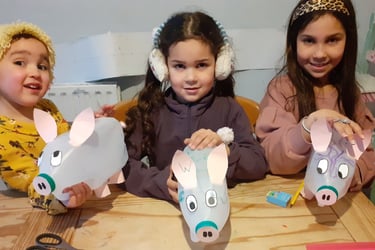

If you're interested in this book, you can find it here. I hope you enjoy it as much as I did!
#comissionsearned
____________________
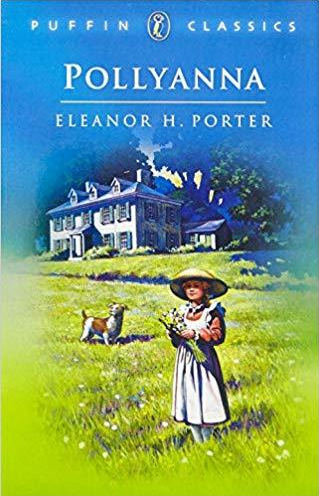

Pollyanna
by Eleanor H. Porter
____________________
Some stories are so timeless and impactful that they linger in our hearts long after we’ve read the last page. For me and my girls, Pollyanna by Eleanor H. Porter is one of those books.
Pollyanna is a well-known classic about a poor little girl who loses her mother, then lives with her father, a missionary minister. After his death, she is sent to live with her wealthy Aunt Polly. Aunt Polly is described as a proud, lonely, and bitter woman, very conscious of appearances and social rules. She holds influence in the community but rules her own household with rigidity and little affection. Thankfully, Pollyanna finds warmth in Nancy, the young maid, and Old Tom, the handyman.
Despite her circumstances, Pollyanna brings with her the “Glad Game”—a practice of finding something to be glad about in every situation. Through this, she touches hearts and slowly changes the lives of those around her.
A Child’s Perspective, a Lasting Message
What struck me most is how simple yet profound the lessons are. Told through the eyes of a child, the story reminds us to celebrate life, to practice gratitude, and to see things in a positive—even godly—way. Pollyanna’s approach is very much in line with Bible verses about thankfulness, and the novel portrays this beautifully.
My girls thoroughly enjoyed this book, and the lessons have stayed with us. Even though we read it some time ago, we still practice thankfulness and try to see the glass as “half full.” I’ve noticed how this attitude helps them with problem-solving and even in how they handle their “official meetings” during homeschool discussions. At the time I first read Pollyanna aloud, I had three girls; now with five, I know I will happily revisit it when the younger ones are ready. Honestly, this is a book I’d read again anytime.
Lessons That Stuck With Us
Several moments stood out:
Jimmy Bean, the orphan boy who befriends Pollyanna. When Pollyanna tries to find him a home, she notices how complicated adults can be. My older daughter quickly picked up on the hypocrisy of the “society ladies” who raised money for children in India but ignored the needs of a boy in their own town. It was amazing to see her recognize this and speak up about it.
Mrs. Snow, the bitter invalid, who at first was consumed with complaints. Through Pollyanna’s patience and optimism, Mrs. Snow begins to soften, showing how kindness can change even the most hardened hearts.
Community and Reciprocity. One of the most moving parts of the story comes later when Pollyanna is the one in need. The whole town gathers to express their love and concern for her. It reminded me of the biblical principle of sowing and reaping—what you give out eventually comes back. My children saw this play out in a powerful, emotional way.
Comparing the Book and the Movie
Of course, after finishing the book we enjoyed a family movie night with Disney’s 1960 adaptation. It was fun and memorable, but—as is often the case—the movie didn’t capture the full depth of the book’s message.
Characters were portrayed differently. For example, in the book, Reverend Ford is a discouraged minister. His sermons are long, heavy, and moralistic because he has lost joy in his faith. His turning point comes in the woods, when Pollyanna explains the Glad Game and reminds him of the many Bible verses about thankfulness. From that point, his preaching shifts from condemnation to gentleness, and he begins to inspire his congregation with love.
In the movie, however, the minister is shown as almost a puppet of Aunt Polly. She dictates what he can and cannot say from the pulpit, which paints him as weak rather than discouraged. His turning point is portrayed not as a spiritual renewal, but as breaking free from Aunt Polly’s control. This difference struck me, and I felt it was important to explain it to the children.
Final Thoughts
Pollyanna is more than just a children’s story; it’s a book full of life lessons on gratitude, kindness, and faith. It’s one of those rare books that shape not only how we think, but how we live. In our family, the Glad Game continues to echo in our daily lives, and for that reason, Pollyanna has a permanent place on our bookshelf—and in our hearts.
If you're interested in this book, you can find it here.
I hope you enjoy it as much as I did!
#comissionsearned
Please note: This post contains affiliate links. If you make a purchase through these links, I may earn a commission at no additional cost to you. As a amazon Associate I earn from qualifying purchases.
The one and only Ivan
by Katherine Applegate
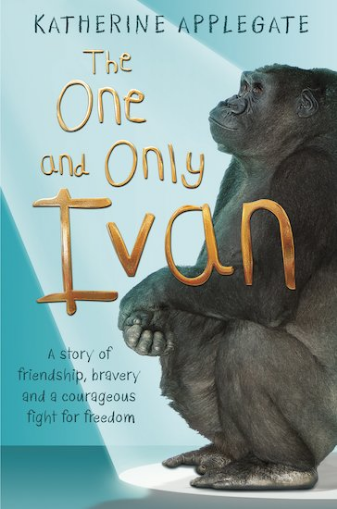

____________________
The Borrowers
by Mary Norton
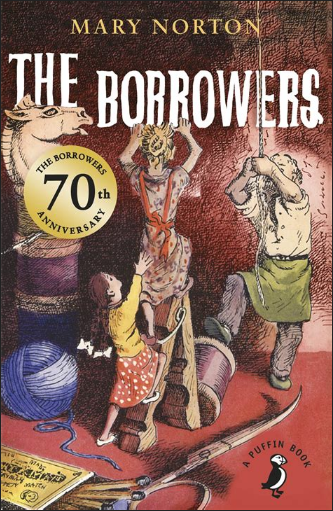

____________________
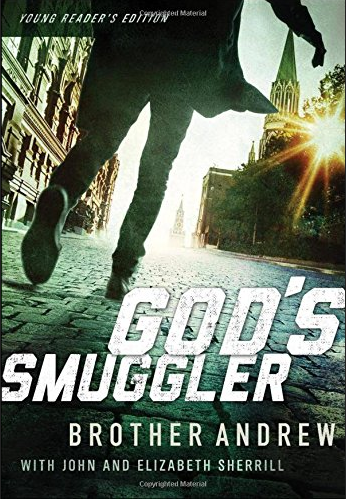

God's Smuggler
Brother Andrew with John and Elizabeth Sherril
(young reader's edition)
____________________
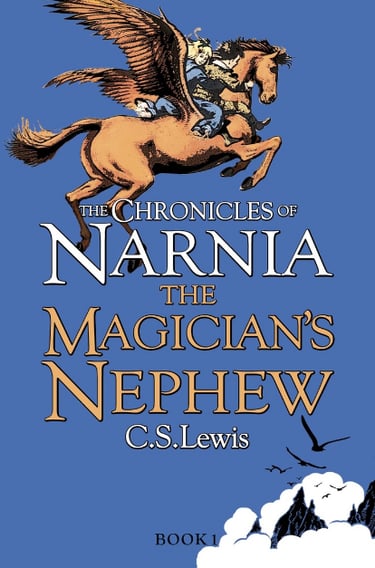

The Magican's Nephew
by C.S.Lewis
____________________
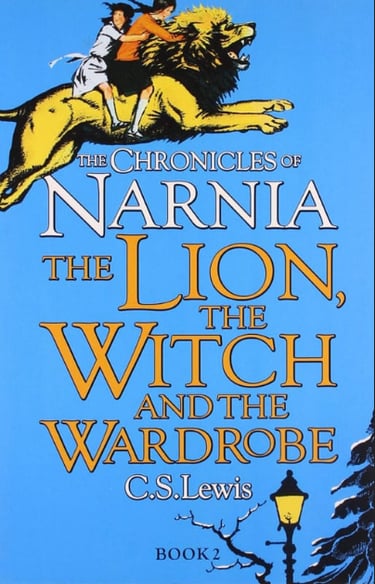

____________________
The Lion the witch and the Wardrobe
by C.S.Lewis
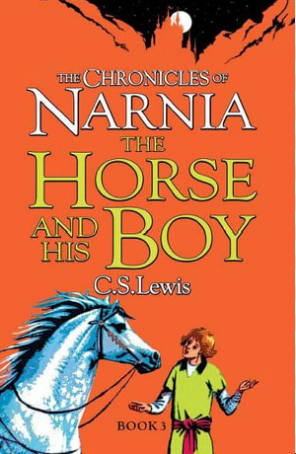

The Horse and His Boy
by C.S.Lewis
____________________
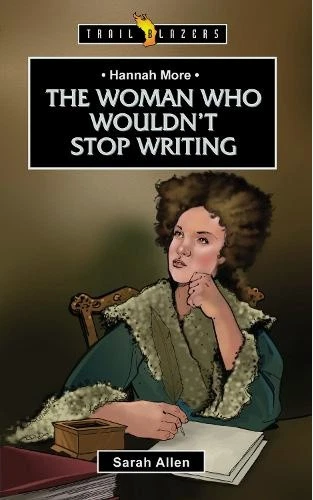

Hannah More - The woman who wouldn't stop writting
by Sarah Allen
